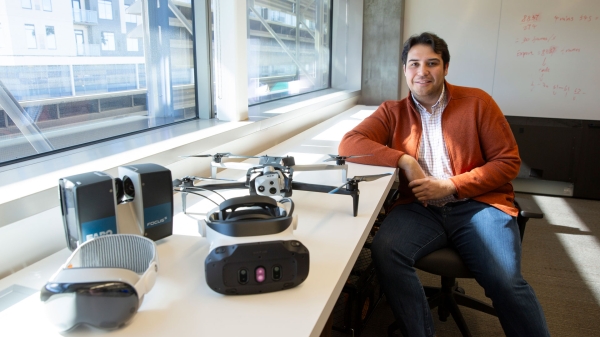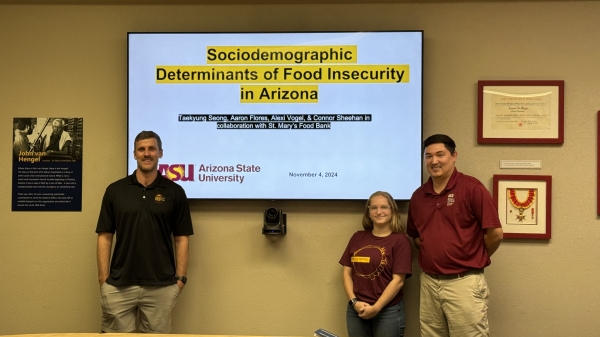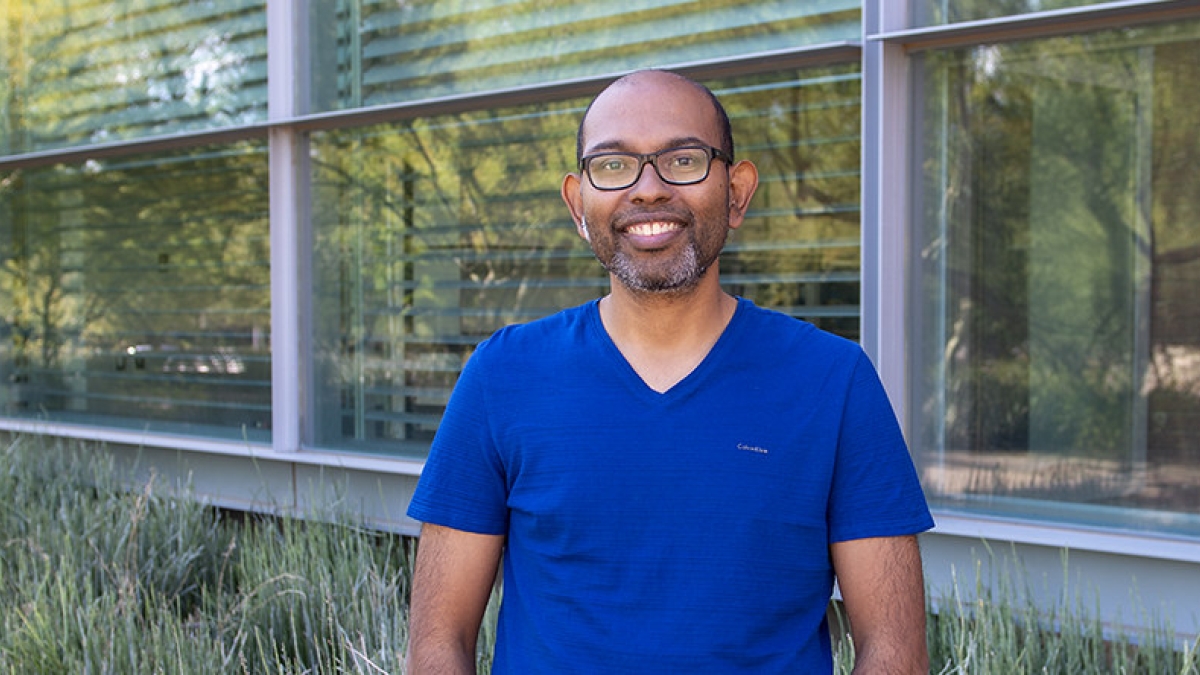Arizona State University researchers, along with colleagues from SLAC National Accelerator Laboratory, Stanford University and two other institutions, have unveiled a crucial detail in the structure of coronaviruses. This class of virus includes SARS-CoV-2, which is responsible for the global COVID-19 pandemic.
In a new study, researchers use a high-resolution imaging method called cryogenic electron tomography to investigate coronavirus spikes — the protein structures that protrude from the surfaces of these viruses.
The spikes play a crucial role in infecting human host cells by attaching to specific surface receptors. Once attached to their target cells, the virus can enter the cell and replicate.
In the project, the researchers zero in on the subtle structure of spike proteins. Their high-resolution images show a small hinge, shielded by sugar molecules known as glycans on the spike's stalk, that allows its crown-like section to bend. This curving significantly influences the spike's ability to infect cells.
The researchers used human coronavirus NL63 as their subject. This pathogen causes up to 10% of human respiratory infections, mainly in children and immunocompromised people, with symptoms ranging from mild coughs and sniffles to bronchitis and croup.
Although conducted on a milder coronavirus relative of SARS-CoV-2, the findings have direct implications for understanding and combating COVID-19, as both viruses use the same mechanism to invade cells.
Above graphic shows the spike protein of a coronavirus. The data was assembled using a high-resolution method known as cryo- electron tomography. It shows that the spike can pivot on a hinge structure, which may help the virus more readily attach to receptors on human cells the virus infects.
“The work offers an excellent showcase of how molecular simulations bring to light the stereochemical origins of infectivity when computations are driven by structural and compositional data,” according to study co-author and ASU Assistant Professor Abhishek Singharoy.
“It is the next step we have taken in large-scale molecular simulations since modeling of a whole-cell organelle (Cell 2019), analyzing the vector of a popular COVID vaccine (Science Advances 2021), and now, handling conformational diversity across the surface of an entire viral particle. In all these exercises, experiments and computations worked hand in hand.”
Singharoy is a researcher with the Biodesign Center for Applied Structural Discovery and ASU’s School of Molecular Sciences.
The study highlights the first images made of the spikes of this strain of coronavirus while still attached to the virus particles, offering researchers unprecedented insights into the dynamics of viral infection.
The research suggests that targeting these spike hinges could be an effective way to prevent or treat various coronavirus infections, including SARS-CoV-2. The team also found that each virus particle is unique in shape and the way it displays its spikes, which vary in number and flexibility.
The work, published in Nature Communications, is part of a larger effort to respond to the COVID-19 pandemic and could lead to universal strategies for tackling coronavirus infections. It was supported by various national research initiatives, including the National Virtual Biotechnology Laboratory and the Department of Energy's Office of Science.
More Science and technology

Teaching construction realities with virtual environments
Visiting a construction site is a valuable learning opportunity for students who want to one day work in the industry.…
ASU, Mexico partner to build next generation of chipmakers, drive semiconductor innovation
Thousands of college students in Mexico will soon have the opportunity to enroll in Arizona State University’s new, free online…

ASU, St. Mary’s Food Bank partner to tackle food insecurity in Arizona
Arizona State University and St. Mary’s Food Bank (SMFB) have joined forces to create an interactive data dashboard that tracks…
